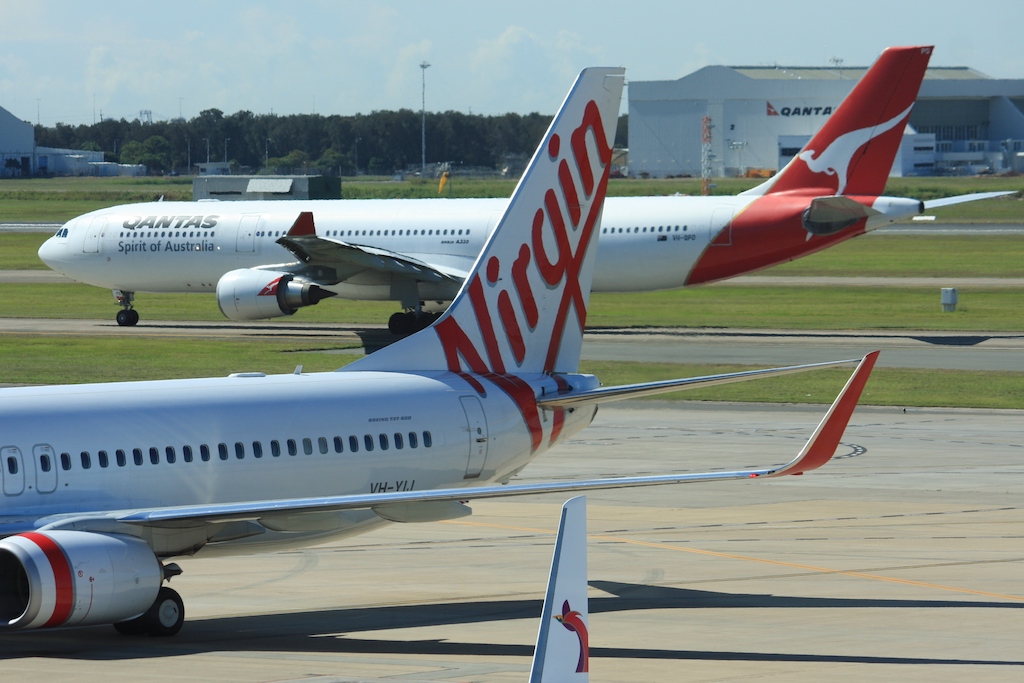Virgin Australia, which restructured in bankruptcy during the Covid crisis, announced an annual profit for its fiscal year that ended in June. It was the airline’s first profit in 11 years.
According to financial figures filed with Australia’s government, Virgin’s operating margin was 9% for the fiscal year, on roughly US$3.4 billion in revenue. Its net profit was US$87 million. Looking at just the company’s airline business (domestic, international, regional, and charter flying), its operating margin was 7%. Virgin’s Velocity loyalty program, meanwhile, now with 11.5 million members, earned a 23% margin. Virgin runs a small cargo operation too, without disclosing its financial results.
Providing an outlook for the current period, the company stated: “Virgin Australia continues to see healthy demand as customers prioritize travel in the face of cost-of-living pressure.” It also cited rising fuel prices as a challenge, which it’s been working to offset with “efficiency initiatives.”
When Virgin began life under the name Virgin Blue more than 20 years ago, success came quickly. But after several years of impressive profit margins, growth opportunities slimmed, pushing it towards riskier and ultimately unprofitable areas of business. It tried to move upscale from its low-fare routes with premium amenities, while at the same time pursuing an ultra-low-cost business with its purchase of rival Tiger Air Australia. If that didn’t add enough complexity, it flew multiple widebody fleet types, operated in the charter space, and formed equity-based partnerships with Singapore Airlines, Air New Zealand, Etihad, and China’s HNA Group.
All the while, Qantas, initially wounded by Virgin’s early rise, reacted with years of counterattacks, including the launch of its own low-cost carrier Jetstar. Most of its tactics worked, propelling its own profits skyward as Virgin descended into its long decade-plus streak of losses.
Shortly after the Covid shock, Virgin filed for bankruptcy, emerging under the control of U.S. private equity group Bain Capital; Richard Branson’s Virgin Group still holds a 5% stake. The restructured airline appointed Jayne Hrdlicka as chief executive, a role she previously held at Jetstar. In the meantime, Virgin slashed expenses while simultaneously investing in product and technology. It formed partnerships with airlines like All Nippon, United, and Qatar Airways. It simplified its fleet as well, narrowing its focus to narrowbody flying. Its plan is to re-fleet with Boeing 737 Maxs. According to Cirium Fleets Analyzer, the carrier currently operates 102 planes, 84 of them older-model 737s. It now has two Max -8s in service, with 27 more on order. Most of its Max orders are for the larger -10 version. Aside from 737s, Virgin presently operates some Fokker-100s and A320s.
Despite Virgin’s financial turnaround, it remains less profitable than its archrival. Qantas, during the same 12 months to June, earned a 14% operating margin (versus the 9% Virgin reported). Qantas is orders of magnitude larger than Virgin too, with about $20 billion in annual revenues (versus Virgin’s roughly $3 billion).
The industry is now watching and waiting for Bain Capital to sell Virgin Australia shares to the public. It’s expressed a desire but hasn’t said when.
Separately in its press release announcing the return to profitability, Virgin said it awarded frontline workers bonuses equivalent to 6.5% of their salaries. They also receive an annual travel credit worth AUD$1,000 (about $640 US$). On the network front, Virgin is now flying internationally to Tokyo, Queenstown, Samoa, and Vanuatu.
“By creating a systemically lower cost base and a conservative balance sheet as well as investing heavily in technology and our frontline, we are well positioned for the future,” said Hrdlicka. “We believe we are well positioned to continue to provide customers with the best value in the market.”





